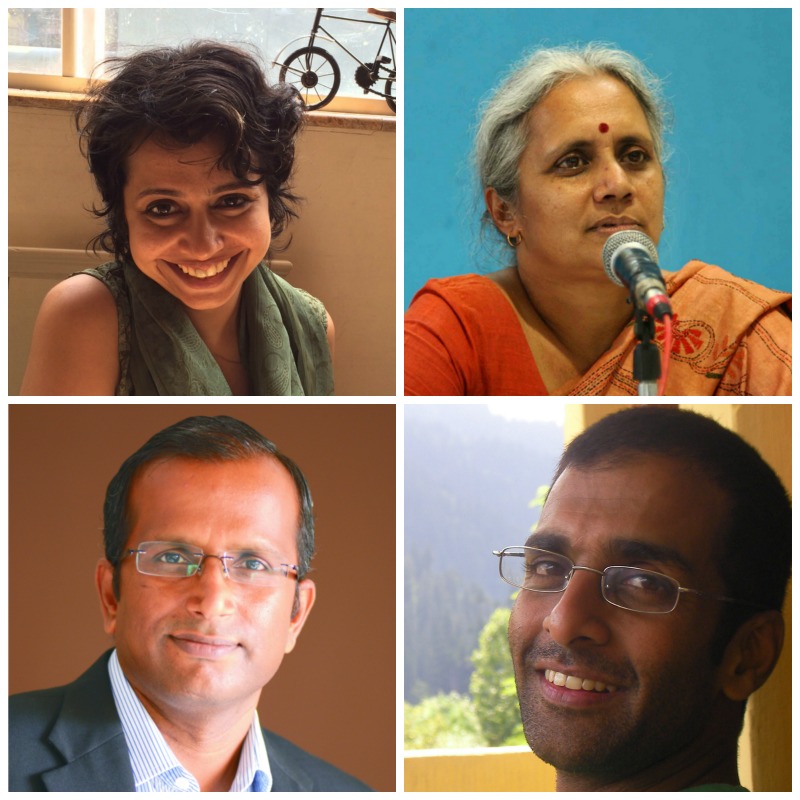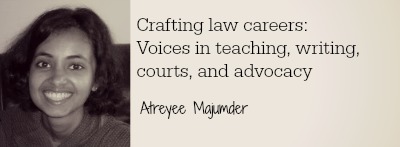Modern India has witnessed many public lives arranged around the vocation of a lawyer. We find repeatedly that many people with strong public voices within native debates about social reform and in striking conversation with imperial forces are lawyers.
The lawyering profession has had several new influences in the current socio-economic milieu in India, not least significant of which has been the opening of the economy in 1991, and the emergence of a range of collaborative lawyering firms and other institutions that assist that range of new private enterprises. A large number of young minds are directed to legal education and the lawyering profession to enter these channels of lawyering services to assist the expanding business arena.
Exploring the terms on which the vocation is practised, I reached out to four legal professionals who have run very different combinations of litigation, advocacy, research, and teaching in their professional lives. These were professionals who obtained their law degrees before and after the cusp of 1991. Harish Narasappa and Arvind Narrain got their degrees in the mid and late 90s, and Amba Salelkar got hers in the 2000s. The three of them got their degrees at the National Law School of India University, which led the trend in producing five-year-law graduates who penetrated the new avenues of the legal profession in the post-1991 era. Usha Ramanathan took her law degree in the late seventies in Chennai, followed it up with an LLM in Nagpur, and found herself visiting the Supreme Court and Indian Law Institute regularly, in the early eighties.
(Clockwise, from top) Amba Salelkar, Usha Ramanathan, Arvind Narrain, and Harish Narasappa
A most senior law researcher
I find it instructive to use Usha’s legal biography to sketch out the contours of what it might mean to be a lawyer by vocation, in India, across the last two decades. We know that a large number of professional channels are now open for people with law degrees to pursue in the shaping of a career – between corporate firms, tradition court practice, tribunal practice, NGOs, policy think tanks, and in-house legal work within companies. Having begun at a time where most of these institutions were absent or present in smaller scale, Ramanathan found herself hovering around a range of judicial spaces in Delhi in the eighties, waiting for her ‘impulse to settle’. She turns a combination of humility and curiosity into a toolkit.
Her first job is as a copy-editor at the Eastern Book Company in Lucknow. She edited Upendra Baxi’s books Indian Supreme Court and Politics and Crisis of the Indian Legal System. She interacted with Justices Krishna Iyer and Bhagwati and read indiscriminately at the Indian Law Institute. She joined a team brought together by Professor Chhatrapati Singh from the Indian Law Institute that travelled through Tamil Nadu collecting data on wastelands. As a by-stander in a child rights case, she helped put together a report on children of prostitutes which was submitted to the chair of the court-appointed committee. She went along with a group comprising different civil society actors to Uttarkashi after the earthquake of 1991 and helped put together a report. These were vastly different issues. Over time, the overarching question that came to inform her work was about the nature of poverty and impact of legal institutions on it. Thus, slowly acquainting herself with the skills of law-informed research, she shaped a profession that she has come to call ‘law researcher’ – someone who collected facts, reported back with data and insight to judicial and administrative bodies, and discussed these insights in the public domain. Along the way, she collected a Delhi University PhD, but still, does not consider herself an academic. Her colleagues joke with her saying at least she should call herself a ‘Senior Law Researcher’.
Ramanathan’s more recent writings and energies have been around the Unique Identification Number and reflections on the thirtieth anniversary of the Bhopal disaster. She is clearly one of the most energetic legal intellectuals of today’s India, someone whose thought and writing forms an important bridge between the theory and the practice of law. She remains steadfastly distant from institutional folds though, in an attempt to conserve her freedom.
Court work, public engagement, and fact-finding
We find the other legal professionals who start their careers a decade or more after Ramanathan, also making creative endeavours to juggle various institutional roles. Narrain came back from Warwick after a Masters, and got involved with founding the Alternative Law Forum in 2002, on the heels of the Gujarat riots. Initially an inchoate space where public interest law would be practiced and researched, an incident of two sex workers being picked up by the police in Bangalore on New Year’s Eve, propelled him and his colleagues to appear in court and argue a bail petition — quite a different route into courts from the usual ones taken by young lawyers to learn courtcraft. His work veered into the realm of sexuality rights and eventually the long drawn judicial battle over the constitutional legitimacy of Section 377 of the Indian Penal Code. A political stance, a legal skill, and the presence of a professional and intellectual space lent to the emergence of this wide public and judicial debate over sexuality rights. Narrain cites the example of Gandhi’s lawyering to show the main tenets of human rights law practice – courtwork, engagement with the wider public, and fact-finding activities.
I find it important to see Narrain’s and Ramanathan’s sensibilities in consonance – the attempt to create and retain an inchoateness in their early career. Both are convinced that they wish to intervene in the legal domain, in public interest, but the exact methods and content emerge over a set of serendipitious meetings and events (though in Narrain’s case the organisational initiative was an important milestone). It is their patience and ability to handle an uncertain unfolding of a professional destiny that should be valuable for young lawyers and law students to learn from, if not emulate. In a series of essays over the next few weeks, I will juxtapose these four legal personalities to show the different ways of crafting one’s presence and influence in legal arenas – in courts, in the public domain, in advocacy with governments, in academia.
(Atreyee Majumder is an anthropologist. She teaches at the School of Development, Azim Premji University.)

